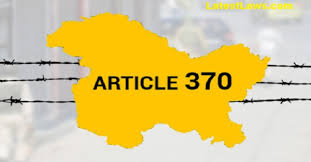Today marks the fifth anniversary of the abrogation of Article 370 and 35A, significant changes that have undeniably reshaped the socio-political landscape of Jammu and Kashmir. The government’s decision to revoke these articles aimed to integrate Jammu and Kashmir more closely with the rest of India, both constitutionally and administratively. While this move has been lauded by many for reducing human losses and almost eradicating terrorism in the region, the situation remains complex for the common Kashmiri.
Post-Abrogation Achievements
The abrogation has led to several positive changes:
1. Improved Security: The number of militant incidents has significantly decreased, from 930 incidents in the three years before the abrogation to 617 in the years following.
2. Enhanced Governance: With the introduction of a three-tier system of grassroots democracy, including Panchayati Raj Institutions, the governance framework has become more robust and participatory.
3. Economic Development: Investments and budget spending in the region have seen a marked increase. The Union Territories of Jammu and Kashmir and Ladakh have received substantial investment proposals, amounting to over Rs 81,122 crore, aimed at boosting infrastructure and development.
4. Tourism Boom: The tourism sector has seen a significant uptick, with hotels experiencing high occupancy rates and advance bookings.
5.Daily Life: Street vendors are thriving in the absence of frequent hartals (strikes), and students enjoy a more stable and peaceful environment without the fear of violence and pellet injuries.
The Lingering Dilemma
Despite these improvements, many Kashmiris remain skeptical. This skepticism is fueled by a history of political manipulation and unfulfilled promises. The narrative of progress often clashes with the lived reality of many residents, who feel disconnected from the mainstream political processes.
Leadership and Influence
The current political climate is marked by a stark divide between the ruling Bharatiya Janata Party (BJP) and local political leaders. Figures like Sajad Lone, Omar Abdullah, Altaf Bukhari, and Mehbooba Mufti continue to voice strong opposition against the abrogation, using social media to spread their dissent. Their influence over the local population remains significant, often casting a shadow over the government’s efforts to project a narrative of peace and progress.
Youth and Subordinate Psyche
The younger generation in Kashmir, having grown up amidst conflict and political turmoil, exhibits a complex psyche. On one hand, there is a palpable relief from the reduced violence and increased economic opportunities. On the other hand, the psychological scars of past conflicts and a deep-seated mistrust in political institutions persist. Many youths still feel marginalized and are easily swayed by leaders who promise change but often fail to deliver.
Subordinate Psyche of Our Youth Leaders
The subordinate psyche of the young generation is one of the critical factors why they continue to follow these visionless leaders. Many of these youths, disillusioned by years of conflict and political instability, find themselves psychologically tethered to leaders who exploit their emotions and fears for personal gain. These leaders, living in lavish government bungalows, offer a stark contrast to the everyday struggles of the common Kashmiri.
Youth should ideally be the torchbearers of change, exposing the true nature of these leaders who live opulent lifestyles at the expense of their followers. However, the historical context of disenfranchisement and manipulation has left a deep imprint on their collective psyche. The psychological manipulation by leaders who romanticize conflict and resistance has trapped many young Kashmiris in a cycle of distrust and disillusionment.
A Path Forward
For a sustainable and peaceful future, it is crucial to bridge the psychological and emotional gaps between the government and the people of Kashmir. This requires:
1. Inclusive Dialogue: Continuous and genuine engagement with local leaders and communities to address their concerns and aspirations.
2. Transparency and Accountability: Ensuring that promises made by the government are kept and that there is clear communication about development projects and their impacts.
3. Empowerment and Participation ko: Strengthening local governance structures and encouraging active participation from all sections of society, especially the youth.
The abrogation of Article 370 and 35A has set the stage for potential transformation in Jammu and Kashmir. However, the journey towards complete integration and acceptance is ongoing. The common Kashmiri’s dilemma lies in navigating this new reality while contending with the influences of past and present political narratives.
In conclusion, while significant strides have been made in improving security, governance, and economic prospects in Jammu and Kashmir, the true measure of success will be in winning the hearts and minds of its people. This will require continued efforts to build trust, promote inclusivity, and ensure that the voices of all Kashmiris are heard and respected.



